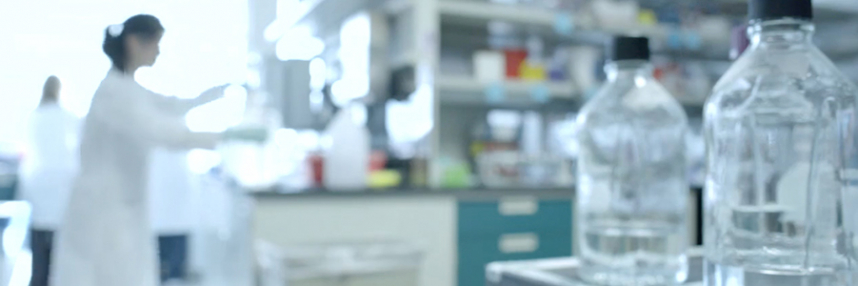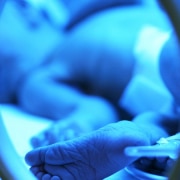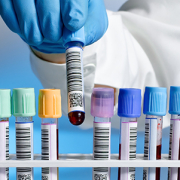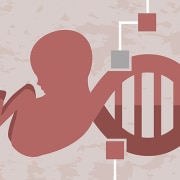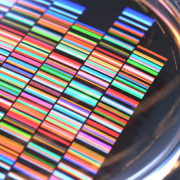Sequencing cancer DNA – what are the issues?
Whole genome sequencing can reveal vast amounts about how cancer cells work, but the process of discovery is not without challenges
The 100,000 Genomes Project, as part of its cancer pipeline, will sequence the genomes of around 25,000 tumours, writes Fiona Macdonald.
One of the main drivers for sequencing DNA from tumours is to harness the potential of personalised or stratified medicine. This begins with identifying mutations in genes – molecular biomarkers – that can inform treatment choice, allowing drugs to be tailored to individual patient’s tumours.
The Stratified Medicine Programme (SMP1 and 2), funded by CRUK and the pharmaceutical industry, has already shown how a next-generation sequencing (NGS) approach can be used to sequence a limited panel of genes in tumours to identify the presence of actionable mutations that can be targeted by chemotherapeutic drugs.
In SMP2, lung cancer patients whose tumours contain specific mutations identified through NGS analysis of a panel of 28 genes can now be entered into the National Lung Matrix drug trial, giving them unprecedented access to new drugs from AstraZeneca and Pfizer.
The cancer arm of the 100,000 Genomes Project should complement the SMP by expanding the genetic analysis to sequence the entire cancer genome, thereby better defining the genetic make-up of tumours and opening up the possibilities of new therapeutic options.
This work is complex, however, and many of the issues identified by the SMP will make whole genome sequencing (WGS) challenging. These complexities fall into two areas: technical issues associated with the material available to study and those related to the basic biological properties of tumours.
Technical aspects
The most important factors affecting the success of NGS are DNA quality and quantity.
Ensuring high quality
Ideally, the high-quality DNA extracted from fresh frozen tumours would make the best analyte for NGS. However, freezing of tumours is not routine practice and would require changes in the pathways employed within pathology departments.
Good tissue fixation is fundamental in preserving tumour morphology, to enable pathologists to make an accurate diagnosis. Tumours or biopsies are therefore routinely fixed in formalin and embedded in paraffin, known as FFPE, to produce tissue sections that can be stained and then analysed. This material is stored long term and can be readily accessed.
However, the process of fixation itself causes technical problems when it comes to analysing DNA extracted from this material; formalin can significantly damage DNA during fixation. This leads not only to fragmentation of the DNA, but also to the introduction of non-reproducible artefacts in sequences caused by changes in the base composition of DNA itself, which can be misinterpreted as mutations.
Ongoing studies evaluating alternatives for formalin fixation look very promising (reviewed by Howat and Wilson (2014), Science Direct 70, 12-19), but implementation of any changes will require collaboration between histopathologists and the scientists carrying out the molecular analyses.
Achieving sufficient quantity
Quantity of DNA is affected by two issues: tumour cell content and amount of tissue available for extraction. Tissue sections cut from FFPE contain a mix of both tumour and normal cells. In order to enrich for the former, histopathological examination of a stained section can define the area of tumour that can then be extracted from subsequent tissue sections to maximise the quantity of tumour DNA.
Yields of DNA from FFPE are generally low, especially from biopsies, and frequently the amount of material available for molecular studies following routine investigations is limited. The low yield of DNA from biopsies can be compensated for, in part, by the higher quality of DNA, as biopsies are fixed more rapidly, reducing the extent of DNA damage.
Since molecular studies to stratify treatment are now an important addition to routine pathology testing, it is important to maximise material for extraction. Trimmings from FFPE blocks, which in the past were discarded, will need to be retained in future to improve DNA yields.
In order to ensure high-quality sequencing for the 100,000 Genomes Project, it is important to determine that yield and quality are adequate. A biorepository has been established to check these parameters before DNA is submitted for WGS as, although the cost of sequencing is falling, the cost per run and the workload involved is not inconsiderate.
Biological aspects
Tumour heterogeneity – differences among tumour cells – is well recognised and is not a new concept, but poses major challenges when identifying biomarkers to guide therapy. Utilising the huge capacity of NGS, the extent of intra-tumour heterogeneity – variation in cellular appearance and behaviour within a single tumour – has been proven within many tumours, and multiple sub-populations of cells with different somatic mutations identified.
Therefore, identification of a biomarker in one area of a tumour, particularly if detected in a biopsy, may not be representative of the whole tumour. This means that although targeted therapy may be effective for one sub-clone containing the marker, other clones may be resistant and can therefore continue to expand. This contributes to treatment failure and drug resistance, and can explain why some patients initially respond well to treatment but later relapse.
In addition, as tumours progress over time, their molecular profiles will change. The molecular profile obtained from the initial surgical specimen may well not accurately reflect the range of mutations present in a metastasic tumour. Obviously, a potentially actionable mutation can also be overlooked if only one area of tumour is sampled, with the result that a potentially effective therapy may be withheld. A study from the Wellcome Trust Sanger Institute has beautifully illustrated this problem in renal tumours, showing that 63%-69% of mutations were heterogenous and were not detected in all areas of the tumours (Gerlinger et al. (2012) NEJM 366, 883-92).
Looking ahead
During the course of the 100,000 Genomes Project, all these issues will need to be addressed. As the project progresses, it will help us understand the molecular features of cancer genomes to enable further refinements in targeted therapy.
Despite the limitations of FFPE-extracted DNA, we know from the Stratified Medicine Programme that it can be utilised to identify actionable mutations that can in turn guide therapies more effectively. It will be interesting to compare this targeted approach with the more extensive analysis provided by WGS through the next three years of the 100,000 Genomes Project.
Fiona Macdonald is a consultant clinical scientist based primarily in the West Midlands Regional Genetics Laboratory, and is is a fellow of the Royal College of Pathologists. She is an author on more than 80 papers and has also written a variety of book chapters as well as co-authoring two books on the molecular basis of cancer.
–


